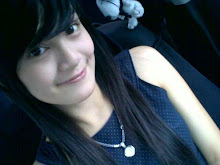 By 1975, Rupert Hine was already beginning to gain credibility as a producer and session musician, but he had also released two of that era's most cryptic solo albums in Pick Up a Bone and Unfinished Picture. The latter in particular demonstrated that Hine had few peers when it came to shaping elaborate instrumental textures and atmospheres without departing from a song-based format. Most listeners' overriding feeling on hearing them, however, was one of perplexity, and sales were correspondingly minuscule. But throughout his career, Hine has shown himself perfectly willing to rein in his more experimental tendencies for the sake of shifting a few more units. In the '80s, for instance, he largely subsumed the complexities of his three solo albums for Island beneath the hard and shiny surface of his faux band, Thinkman. And that's pretty much what he did in 1975 when he formed Quantum Jump, which is not to say that the band represented a blatant bid for chart success -- far from it. But in stark contrast to the somewhat austere Unfinished Picture, Quantum Jump's first album wasn't afraid to get funky.
By 1975, Rupert Hine was already beginning to gain credibility as a producer and session musician, but he had also released two of that era's most cryptic solo albums in Pick Up a Bone and Unfinished Picture. The latter in particular demonstrated that Hine had few peers when it came to shaping elaborate instrumental textures and atmospheres without departing from a song-based format. Most listeners' overriding feeling on hearing them, however, was one of perplexity, and sales were correspondingly minuscule. But throughout his career, Hine has shown himself perfectly willing to rein in his more experimental tendencies for the sake of shifting a few more units. In the '80s, for instance, he largely subsumed the complexities of his three solo albums for Island beneath the hard and shiny surface of his faux band, Thinkman. And that's pretty much what he did in 1975 when he formed Quantum Jump, which is not to say that the band represented a blatant bid for chart success -- far from it. But in stark contrast to the somewhat austere Unfinished Picture, Quantum Jump's first album wasn't afraid to get funky.
The band formed after Hine became a regular visitor to a countryside studio owned by drummer Trevor Morais. The two became the nucleus of Quantum Jump and were soon joined by bassist John G. Perry, recently a member of Caravan and a regular contributor to Hine's solo work and his early productions of albums by Kevin Ayers and Yvonne Elliman. Auditions for a guitarist followed, during which Andy Summers was among those passed over, but the job eventually went to the Washington, D.C.-born Mark Warner. The final ingredient was provided by lyricist David MacIver, with whom Hine had made his first recordings in 1966 as Rupert & David. One song, however ("Starbright Park"), had lyrics by Jeanette Obstoj, marking the beginning of a working relationship that continued long after Quantum Jump's demise, and which would one day find them writing for Tina Turner.
Inspired by Warner's formidable technique and by their love of the Mahavishnu Orchestra, the bandmembers wanted to see if it were possible to combine jazz-rock arrangements with a pop sensibility. Things looked promising when their first single -- the untypically whimsical "The Lone Ranger" (which hinted that the Masked Man had a crush on Tonto) -- became a minor hit in the U.K. The album, though, steadfastly refused to follow suit, and for the band's follow-up, Barracuda, a more polished style closer in spirit to progressive rock was adopted. Needless to say, 1976 was not the year to be launching a new prog rock band, and Quantum Jump folded soon after. AMG.
listen here
Saturday, July 23, 2011
Quantum Jump - Barracuda 1977
Popular Posts
-
When you think of the Doors , "guitar" isn't the first thing that usually comes to mind ( Jim Morrison 's manic persona an...
-
The only album by the Steve Baron Quartet was a fitfully interesting but uneven effort, jumping between Baroque folk-rock, moody early si...
-
David Lannan was a street singer from San Francisco, CA. 1970's Street Singer was recorded live outside The F.B.I. Stock Exchange City H...
-
Kathy McCord - Kathy McCord 1970 Kathy McCord released a lone self-titled LP in 1970, the first release from Creed Taylor ’s CTI Records, ...
-
Ahmed Abdul-Malik was one of the first musicians to integrate non-Western musical elements into jazz. In addition to being a hard bop bas...
-
Although it was a disappointing seller and signaled the start of Donovan 's commercial decline, Open Road could have been a new beginn...
-
A wild, freewheeling, and ultimately successful attempt to merge psychedelia with jazz-rock, Soft Machine 's debut ranges between loving...
-
The Small Faces were the best English band never to hit it big in America. On this side of the Atlantic, all anybody remembers them for i...
-
Redbone was a Los Angeles-based group led by Native American Pat and Lolly Vegas . They hit paydirt in 1974 with the million-seller "...
-
Kingfish is a San Francisco-influenced band which originally featured the Grateful Dead's Bob Weir , singer/harpist Matthew Kelly , bas...











0 comments:
Post a Comment